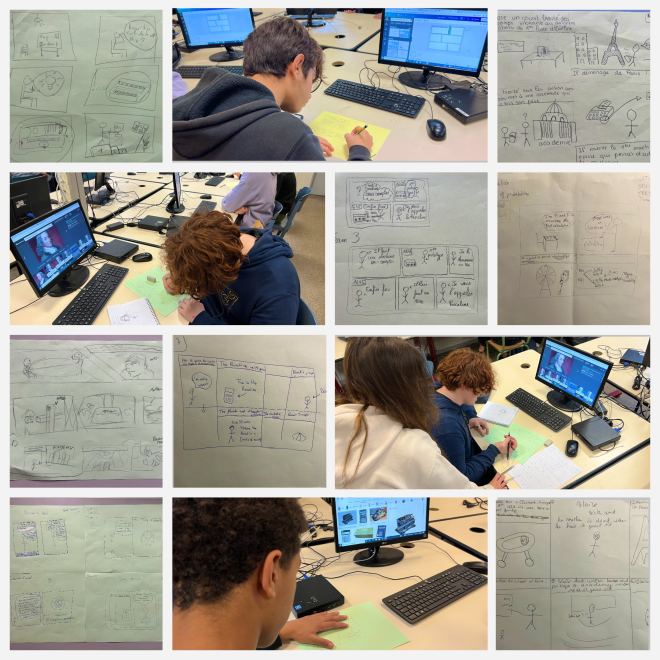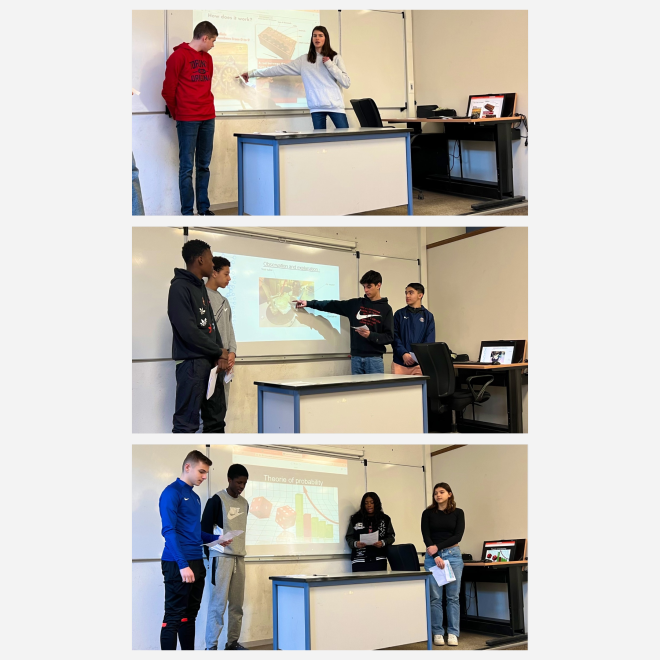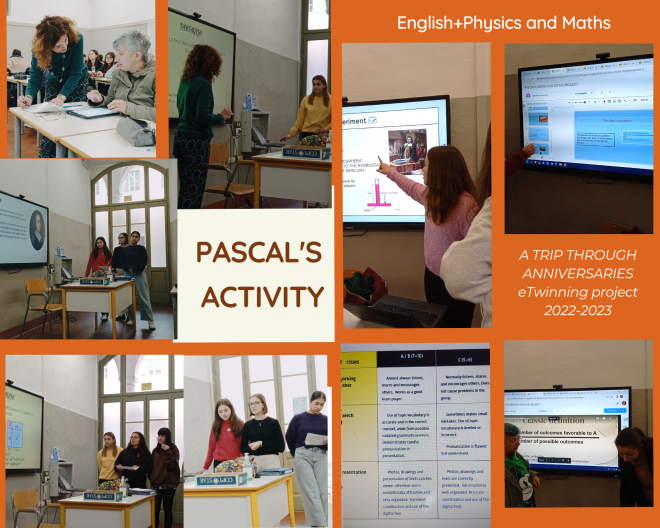PASCAL'S ANNIVERSARY: WORK PROCESS
Source: pixabay.com
You can find some evidence of the work done by our students below.
Lycée Michelet (France)
STEP 1 - The students discussed with their European team-mates to share the work, created storyboards for their parts of the collaborative comic strips, then designed the comic strips online with Canva.
STEP 2 - The students attended a class in the science lab with their physics teacher, Ms J. Foret. They did some experiments to understand atmospheric pressure and Pascal's principle. They completed a worksheet designed on purpose by Ms Foret.
STEP 3 - The students used what they had learned in their physics class to design some presentations on Pascal's discoveries & inventions, then the 9 groups presented them orally to the class in English. The presentations were peer-assessed and teacher-assessed using the rubric on page 5.
Colegio Montpellier (Spain)
Drawings creation. Our students created draft drawings as a starting point:
Cartoon strips & presentations production. Then, it was time to work with their twins in Canva cartoon strips and to create their group presentations. All the process was assessed by both students and teacher with the help of a journal providing a work process assessment and selfassessment.
Class presentations. Once the students' presentations on Pascal's inventions had been finished, their Physics and Chemistry teacher supervised them and help them understand it better:
Students were graded by teachers as well as classmates according to a rubric. In this way we ensure the assessment of their products:
Pascal's presentation to younger school mates. Younger students at Montpellier school (2º ESO), had the chance to get to know Pascal's inventions and theories with the help of our project participants through their presentation and his life through the comic strip. They were accompanied by their common Physics and Chemistry teacher, thanks for your help, Emiliano!.
Music School Serres (Greece)
Liceo Statale delle Scienze Umane "S.Anguissola (Italy)
STEP 1 -The students interacted with their European team-mates, they decided which aspect of Pascal’s life they would focus on and learnt how to use Canva to create storyboards for their parts of the collaborative comic strips.
STEP 2- Their maths and physics teacher, Ms Fanti introduced the class to Pascal’s world and anticipated some contents which are proper to the next year programme for physics. She illustrated Pascal's principle and guided them through.
STEP 3 -The students were divided into 8 groups to design some presentations on Pascal's discoveries & inventions, then they presented orally to the class in English. Mrs Fanti helped with a scientific glossary. The presentations were peer-assessed and teacher-assessed using the rubric on page 5.
EACH GROUP has assessed their mates' presentations, using the shared grid items
HERE IS THE LESSON PLAN OF THE INTERDISCIPLINARY WORK WHICH HAS BECOME A CLIL MODULE
CLICK HERE TO
THE SCIENTIFIC GLOSSARY the class has worked on thanks to the supervision of Mrs Fanti, the maths and physics teacher
AND FINALLY HERE ARE THE WORDS OF A STUDENT enjoying the activity
" I really liked this project because it is entertaining and unique but not only for this .
we tried to merge different subjects but the thing I really liked was Pascal's part because first of all we tackled a topic that we hadn't done and it is interesting.
I learned to collaborate with the group , to carry out my task with precision and on time and add in my vocabulary several words in English that I didn't know.
If I had the opportunity I would like to participate in a European project again because I like to collaborate with different people using English.<3


















